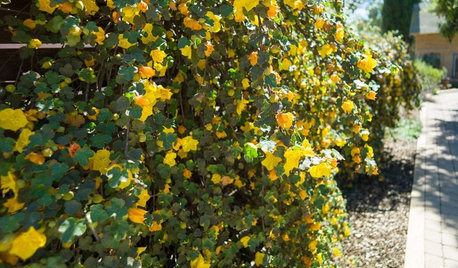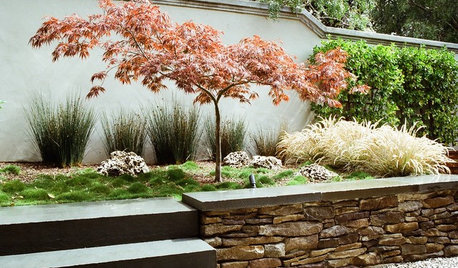Does pruning a tree promote acceleration of growth?
viche
12 years ago
Related Stories

WINTER GARDENINGPruning Secrets for Exquisite Roses
Encourage gorgeous blooms year after year with this time-tested advice on how to prune your rosebush in winter for health and shape
Full Story
GARDENING GUIDESHow to Prune Your Flowering Shrubs for the Best Blooms
Less is often more when it comes to properly pruning flowering shrubs. Here’s what to do and why
Full Story
GARDENING GUIDESGot Frost-Damaged Plants? How It Happens, and When and How to Prune
Crispy brown leaves are a sure sign that Jack Frost has been to your neighborhood
Full Story
GARDENING GUIDESTidy Up Sprawling Native Shrubs With These Pruning Tips
Sound horticultural pruning methods work for native and nonnative plants alike
Full Story
LANDSCAPE DESIGNPretty Trees for Patios, Paths and Other Tight Spots
Choose trees for their size, shape and rate of growth — or shape them to fit your space. Here's how to get started
Full Story
GARDENING GUIDESTree Care: Common Tree Diseases and What to Do About Them
Learn to recognize trees that may be affected by diseases or pests so you can quickly take action
Full Story
GARDENING GUIDESHow to Keep Your Trees Healthy
Ensure your trees’ vigor for years to come with these tips for protecting roots, watering effectively and more
Full Story
FALL GARDENING6 Trees You'll Fall For
Don’t put down that spade! Autumn is the perfect time for planting these trees
Full Story
ARBOR DAY8 Reasons to Plant a Great Tree
Beauty is its own reward, but the benefits of planting the right tree in the right place go way beyond looks
Full Story
GARDENING AND LANDSCAPINGGreat Design Tree: Japanese Maple
Lacy form and fiery fall color make Japanese maple a welcome tree for garden or patio
Full Story








ken_adrian Adrian MI cold Z5
vicheOriginal Author
Related Professionals
Holly Springs Landscape Architects & Landscape Designers · Anderson Landscape Contractors · Firestone Landscape Contractors · Palos Verdes Estates Landscape Contractors · Maple Heights Landscape Contractors · Carmel Siding & Exteriors · Pike Creek Valley Siding & Exteriors · South Glastonbury Siding & Exteriors · Auburn Decks, Patios & Outdoor Enclosures · Fort Worth Decks, Patios & Outdoor Enclosures · Lafayette Decks, Patios & Outdoor Enclosures · Reisterstown Decks, Patios & Outdoor Enclosures · Santa Ana Decks, Patios & Outdoor Enclosures · Wheaton Decks, Patios & Outdoor Enclosures · Norco Stone, Pavers & Concretewisconsitom
Embothrium
vicheOriginal Author
Embothrium
wisconsitom
vicheOriginal Author
ken_adrian Adrian MI cold Z5
wisconsitom
vicheOriginal Author
brandon7 TN_zone7
wisconsitom
vicheOriginal Author
brandon7 TN_zone7
wisconsitom